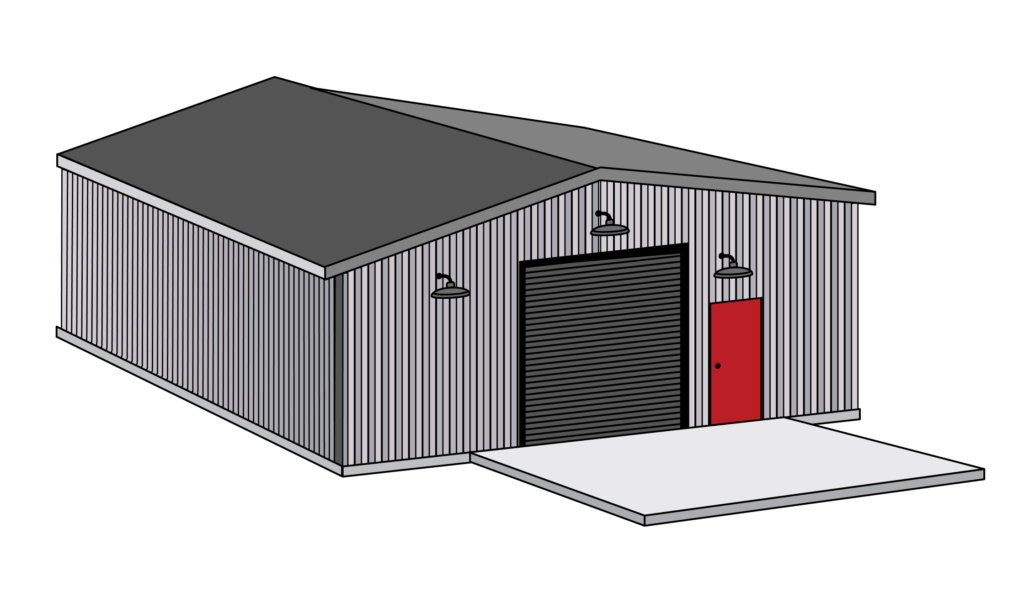I have had a fabulous workshop in my friend Jim's barn for the past 18 years. It's the best workshop on earth, and I have enjoyed making things there. It has all of my tools in it, and it has a separate tool room and spray paint room for finishing in a dust-free environment, critical to my success.

This is my artist's rendition of the new shop. It will be 40 x 40 feet in size.
Jim and his wife Carlen operate the Rancho Burro Donkey Sanctuary, a non-profit animal rescue organization dedicated to saving and reviving lost, injured and abandoned donkeys.
In recent years, Rancho Burro has outgrown its current capacity. Jim and Carlen bought a larger piece of land a few years ago, and have been building the new Rancho Burro there. The new location includes a huge barn with room for more donkeys; there are many acres of pasture and grazing land, and a large arena and "loafing" area for the animals. They have also added a veterinary room, and indoor storage for grain and bedding.
They have recently put the current property on the market, and I assume that it will sell quite quickly. When it does, I will no longer have my shop, and I will have to move.
Jim offered some land for me to build a new shop to replace the current one. I jumped at his suggestion, and have been working on this for a couple of years now. In fall of 2022 I bought a pre-engineered steel building that was delivered to the property in December, 2022. It is currently an 11,000 lb. stack of metal, resting in the shade of the new donkey barn, and awaiting the completion of a concrete pad. That can't happen until I have two building permits – one for the grading and one for the pad and the building.
The building is 2,400 square feet, and my original plan was to add a lean-to structure to the side of it to house lumber storage, electrical equipment, my Burning Man generator trailer, a large air compressor, and a dust collection system – all ourside and under shade.
I hired a structural engineering firm to draw the plans for the concrete pad, and to provide structural analysis of the building for the county planning department. I then hired a grading engineer to draw the grading plans, and an architect to consult on the construction details of the lean-to structure.
I decided to draw my own architectural drawings, something I have never done before. If you have followed my posts here, you know that I am a capable illustrator. It seemed reasonable to graduate to large-scale work and become an architectural draftsman. To do this, I studied existing architectural drawings and learned how they are made.
I needed to provide detailed drawings for the interior spaces of the building, the siting of the building, and the electrical work needed. I was required to provide topographic information, lot-line dimensions, and location drawings for the county.
I had been working on the assumption that a building of this size would be acceptable to the county, as Jim's new property is very large – almost 46 acres. But I was mistaken (and misinformed). The County (capital C) rejected my work in the first few days of Attempt One, indicating that the planned building would exceed the maximum square footage allowed for the property. They advised me that the largest structure I could build was 1,662 square feet (based on the footprint of the new residence on the same land).
In the next chapter I discuss dealing with rejection. Should I give up and sell the building? Should I find different land for the building? Should I take up the piccolo instead of wood working?

No comments:
Post a Comment